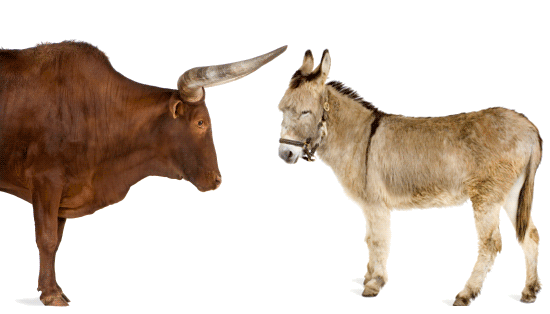 |
intersect
Under the Rabbi's Microscope, Part Four
INTERSECT (Where the Bible Meets Life) is a regular column of ONE Magazine featuring Dr. Garnett Reid, a member of the Bible faculty at Free Will Baptist Bible College. Email Garnett greid@fwbbc.edu |
Don’t grow wheat with your grapes!
Don’t hitch your ox to plow with your donkey!
Don’t wear that wool and linen blazer!
Be sure that tassels hang from your sweater!
This rather loose rendering of Deuteronomy 22:9-12 points up precisely the kinds of issues involved when we wrestle with law in the Old Testament. Oh, sure, the Ten Commandments? Yeah, we get those—they’re major deals! But it’s these weird, picky precepts that cause us to just scratch our heads and move on.
Not so fast, though. Let’s take these four curious canons I’ve mentioned through their paces in trying to make sense of Old Testament law.

Little Laws, Large Lessons
First, remember that detailed case laws such as these almost always reflect specific application of at least one of the Ten Commandments. The four listed above introduce a larger section in Deuteronomy that deals with sexual impurity—the seventh commandment (Deut. 22:9-23:19).
Of these, the first three statutes allude to improper combinations: a defiled crop mix, a clean animal yoked with an unclean one, and fabric mixes worn by prostitutes. Number four—the tassels command—relates to a fashion feature designed to foster faithfulness (see Num. 15:37-41). So all four edicts support the main lesson in this part of Deuteronomy, which happens to be the principle behind the seventh commandment: purity and loyalty in relationships.
Next, keep in mind that what these “little laws” do in effect is teach Israel how to respond properly to God’s character and authority in all details of their lives. Covenant people are to show how loyalty to the Lord affects one’s entire being. Clearly the same concern is still appropriate for the people of God today, the church.
Different Culture, Different Covenant
Two factors point up the difference between Israel in the days of Moses and Christ’s body today, though. First, the culture has changed. Ours is not a narrow, agrarian, pre-modern world, as was true of Israel in Old Testament times. That’s why so many of those laws dealt with such things as sheep, carcasses, and boundary markers. No, we are God’s people in a transglobal, technological, transmodern culture. We must apply the law’s principles to stem cell research, playing the lottery, and social networking on Facebook, just to name a few venues that impact decision-making in our culture.
Second, we live under a different covenant. Under Christ’s new covenant, we have a new nature with the law in our hearts, the Spirit living in us, every believer a priest, the completed canon of Scripture, and a nurturing community of edification and accountability in the church.
Old Testament believers, with all the blessings they enjoyed as covenant partners with God, did not have these transformative assets to help them live out the life of God in their daily experience. We do—but seldom make the most of them.
Reverse the Process
What we must do, then, is find the timeless principle behind the temporary precept and apply it to ourselves in the 21st century. Specifically, in our four test case laws, what must I do and how must I live to demonstrate loyalty in my most cherished relationships? Exactly what steps should I take to maintain purity and ensure that I do not betray God’s holiness in my life as a Christian? In essence, Christians simply reverse the process by going from the general to the specific instead of the other way around, as was true before Christ came.
Finally, keep in mind that Jesus, whose coming we celebrate, fulfills Old Testament ceremonial law in the new covenant He makes with His people (see Col. 2:16-23; Heb. 9:8-10; 10:19-25). He reveals the principle of the law and brings to the forefront its inner motive (Matt. 5:17, 21-22, 27-28).
The Law: “God’s DNA”
I close our discussion of the law by borrowing a phrase from A. J. Jacobs’ book The Year of Living Biblically, though not in the context he intends in his discussion. The law is very much “God’s DNA.” It shows us His holiness in the way it displays His character, and it brings us His grace in the very fact that He gives it to us at all. What is left is for us to receive its instruction, repent at its rebuke, trust the One who fulfills it and live for Him.
|

